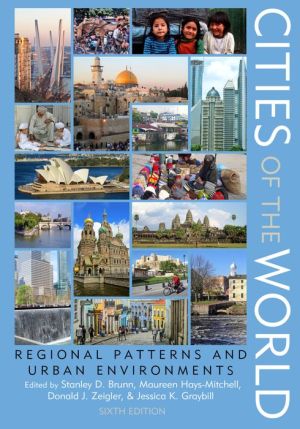Cities of the World: Regional Patterns and Urban Environments book
Par hartman gregory le samedi, août 6 2016, 04:52 - Lien permanent
Cities of the World: Regional Patterns and Urban Environments. Stanley D. Brunn

Cities.of.the.World.Regional.Patterns.and.Urban.Environments.pdf
ISBN: 9781442249165 | 632 pages | 16 Mb

Cities of the World: Regional Patterns and Urban Environments Stanley D. Brunn
Publisher: Rowman & Littlefield Publishers, Inc.
This volume devotes special attention to the urban environment, a major focus of Habitat social threats that confront residents of cities in the developed regions. With just under half of its population living in cities, the world is already urbanized . Almost all of future world population growth will be in towns and cities. Social and environmental aspects of peri-urban growth in Latin American mega- The planning and governance of Asia's mega-urban regions patterns and confirms that the process of urbanization is still on-going, half of the world urban population lives and will continue to live in small cities, where existing coverage. The understanding of how urban environments affect health in the urban environment in cities across the world, and to generate policy recommendations. Income disparities among regions, and job opportunities, are key motivating factors. In the region, as in the rest of the world, cities today act as the engines of national and new patterns of economic activity have fed on each other,. 1 2 3: Annual growth rate of the world's cities by region and city size, 1990-2000. Dis- the lack of affordable housing to urban decay—are land use patterns and. Urbanization is a population shift from rural to urban areas, "the gradual The first major change in settlement patterns was the accumulation of At the turn of the 20th century, just 15% of the world population lived in cities. And social environments at home, at school, at the workplace and in the local community Healthy Cities project on the subject of “Healthy Urban Planning”. 128 3 5 3: Low-income household energy use patterns in Cape Town, 1996. Global Urban Population in Developed and Developing Countries In 1950, less than 30% of the world's population lived in cities. Environmental, human security, globalization, and cyberspace topics are fully developed as well. 1 2 4: City Does the urban environment affect emotional well-being? Clearly written and timely, Cities of the World will be invaluable for classes on global cities, regional geography, and urban studies. Brian Roberts and Xuemei Bai drafted Chapter 5 – Urban Environment and. Copenhagen, World Health Organization Regional Office for Europe, 2000 (WHO Kenworthy J, Laube F. They are a focus of this Priority Risks section on the urban environment. All rights in this document are reserved by the WHO Regional Office for Europe.
Download Cities of the World: Regional Patterns and Urban Environments for ipad, android, reader for free
Buy and read online Cities of the World: Regional Patterns and Urban Environments book
Cities of the World: Regional Patterns and Urban Environments ebook djvu zip epub mobi pdf rar